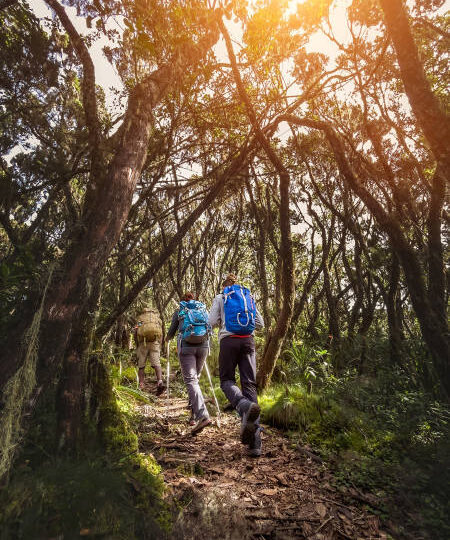10 Tips for Climbing Kilimanjaro
Climbing Mount Kilimanjaro is a dream adventure for many trekkers worldwide. As Africa’s highest peak, standing at 5,895 meters (19,341 feet), Kilimanjaro is both awe-inspiring and challenging. While it doesn’t require technical mountaineering skills, it demands physical stamina, mental resilience, and solid preparation.
Whether you’re an experienced trekker or a first-time high-altitude climber, these expert-backed climbing Mount Kilimanjaro tips will boost your chances of reaching the summit safely and joyfully.
Start Training Months in Advance
Reaching the Roof of Africa requires more than enthusiasm. Start your fitness preparation at least 2–3 months before the trek. Focus on cardiovascular training, endurance hikes with a weighted backpack, and strength exercises. The fitter you are, the more enjoyable your Kilimanjaro experience will be.
Choose the Right Kilimanjaro Route
There are seven main routes up Kilimanjaro, and each offers different scenery, acclimatization profiles, and success rates. For beginners, the Lemosho and Machame routes are ideal, offering better acclimatization and scenic diversity. Avoid the Marangu route if you’re after a more immersive and successful experience.
Pack Smart, Not Heavy
You’ll have a porter carry your duffel bag, but you’ll still need a well-packed daypack. Include essentials like water, snacks, sunscreen, rain gear, and a camera. Use a detailed packing list and make sure your gear is high-quality, especially boots, layered clothing, and a good sleeping bag.
Don’t Underestimate Altitude Sickness
Altitude sickness (AMS) is the number one reason climbers turn back. Even fit hikers can be affected. The golden rules: go slowly, stay hydrated, and avoid alcohol. Climb high, sleep low when possible, and consider talking to your doctor about taking acetazolamide (Diamox).
Hydrate Like It’s Your Job
You’ll need to drink 3–4 liters of water daily. The dry mountain air and high elevation cause dehydration quickly. Bring a hydration bladder and water purification tablets. Warm drinks like ginger tea or hot chocolate also help keep your body warm and hydrated.
Eat, Even If You Don’t Feel Like It
Loss of appetite is common at high altitudes, but your body needs calories to stay strong. Most treks offer well-prepared meals with carbs and proteins. Carry high-energy snacks like trail mix, protein bars, or dried fruit to supplement your meals.
Pace Yourself Pole Pole (Slowly, Slowly)
“Pole pole,” a Swahili term meaning “slowly slowly,” is the mantra of Kilimanjaro climbs. Rushing increases your chance of altitude sickness. Take slow, deliberate steps, even if it feels too slow. Trust your guide’s pace they know what they’re doing.
Invest in Good Gear (Especially Boots)
Well-broken-in boots with ankle support are non-negotiable. Blisters or foot pain can derail your summit bid. Test all your gear including headlamps, trekking poles, and base layers before you go. Bring spares for essentials like batteries and socks.

